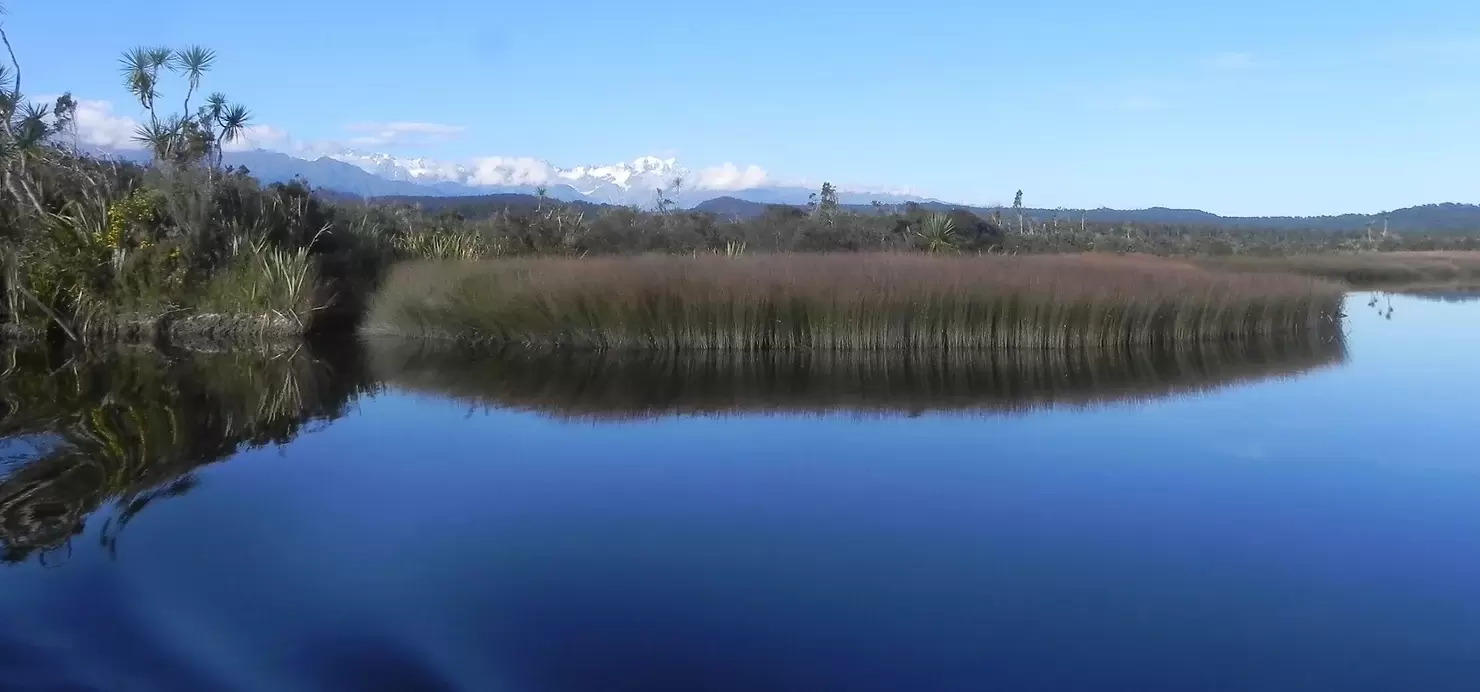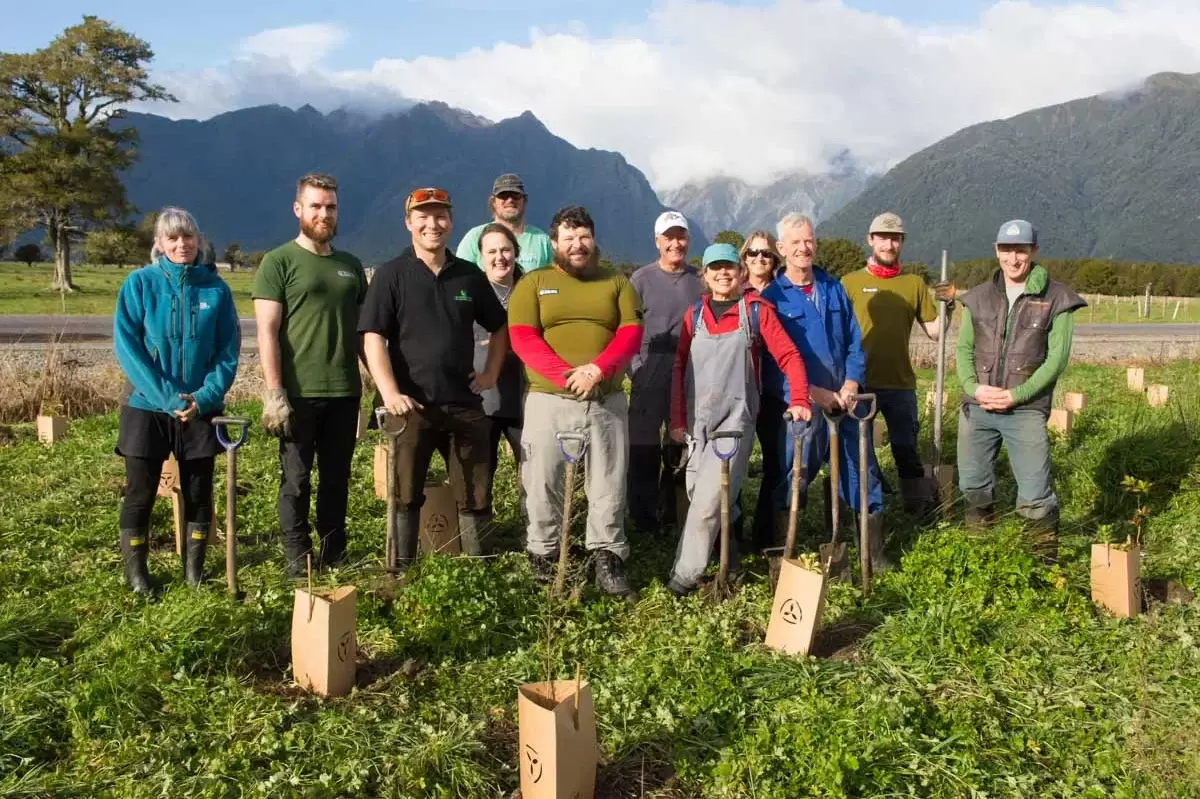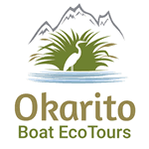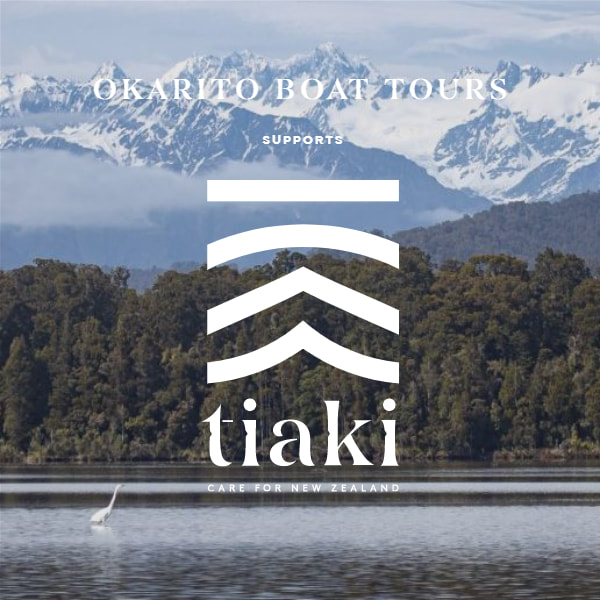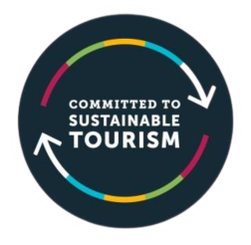Okarito Boat Eco Tours Recognised: Tripadvisor's Travelers' Choice Awards Best of the Best 202423/7/2024 Paula & Swade of Okarito Boat EcoTours are delighted to share the news that they have been recognised in Tripadivsor’s Travelers’ Choice Awards Best of the Best with a 5-Star rating for 2024. The Travellers’ Choice Awards Best of the Best title celebrates the highest level of excellence in travel. It’s awarded to those who receive a high volume of above-and-beyond reviews and opinions from the Tripadvisor community over a 12-month period. Out of Tripadvisor's 8 million listings, fewer than 1% achieve this milestone. “It is inspiring to think that we have made such a memorable impact on on our visitors, from around New Zealand and from around the world that many have shared their experience with us online. We shall continue to strive to deliver the best experience we can here in Okarito Boat Eco Tours for our guests to this region and continue to give back to our communities, to our land and to our waterways. A balanced approach to engaging in tourism while seeking out ways to be consistently gentle and sustainable is what has led us to partner with local tourism businesses to launch the Okarito Plant Project - a regenerative tourism initiative in which we can engage with all sectors of our communities to work together to protect and nurture our astoundingly beautiful West Coast!” Received from the world’s largest travel guidance platform, this award is based on genuine feedback from anyone in the community who has visited and left an authentic, first-hand review on Tripadvisor over a 12-month period, making it a valuable and trustworthy designation of great places to visit. "We are truly honoured and grateful to all those who both seek us out and appreciate the natural beauty of our region"! We look forward to welcoming our guests this season and beyond on our Eco Tour and sharing our little slice of paradise! #WestCoastNZ #WestCoastNewZealand #Okarito #OkaritoLagoon #TripAdvisorTravellersChoiceAward #EcoTourism
0 Comments
As the tourism season winds down on the West Coast during autumn, our focus shifts to an endeavour that brings our community together: the Okarito Plant Project. Launched in May 2023, this project is the result of innovative planning and a shared vision for conservation among a dedicated group of individuals from across Glacier Country. Building Community Through the Okarito Plant ProjectOur core group of "founding members" includes us at Okarito Boat EcoTours, Tash & Cliff from Glacier Valley Ecotours, Chris Alexander from Matheson Cafe in Fox, Franz Josef Glacier Guides, and Jo & Julie from Ribbonwood Retreat B&B in Franz Josef. This diverse representation from the communities of Fox Glacier, Franz Josef, and Okarito has been crucial in shaping and driving the project forward. We are also supported by advisory roles from Development West Coast and the Nature Economy Project, led by Zak Shaw, and Sam Speight from Landcare NZ Trust, who liaises with the essential landowners involved. One of our most inspiring projects is in Whataroa, where we are transforming 12 acres of retired farmland into a reserve. This area, featuring old totara stands, ponds, and streams, is being restored to its natural forest state to support native insects and birds. Okarito Plant Project MilestonesHaving begun with an ongoing planting project near Lake Matheson, Fox Glacier , we have also now completed three rounds of planting at the this Whataroa farm - the Purcell Reserve, including planting this week around a pond and stream area. After a recent rain, we were excited to see the stream flowing, imagining how the sedges we planted will trap silt and sediment from upstream farms. This sediment trapping is crucial as we live downstream at the Okarito wetlands, which seem to be slowly but steadily filling with sediment—a process accelerated by natural landslips and intensified storms. Heavy rains are a hallmark of the West Coast, but the increased intensity of storms and some more intensive farming practices may exacerbate sedimentation and reducing fish, insect, and bird populations. Our sedges act as filters for this sediment, while grasses stabilize the soil, and bushes and trees provide shade and shelter. By planting only ecosourced native trees from the Okarito Native Plants Trust, we ensure nearly 100% success rates in our plantings, which we regularly maintain. Volunteer Planting Efforts EvidentThe results are already visible: bushes are fruiting, and plants are hosting spider webs, which are vital for the local bird population. Beyond the environmental impact, the project has brought immense joy and pride to landowners and volunteers alike. Each planting day feels like a celebration, with participants from all over—Fox, Franz, Okarito, and beyond—coming together to give back to this beautiful land.
One of our members recently remarked on the sense of community we've created, as we looked around at our diverse group of volunteers, united by their love and dedication to the land. This project is more than just planting trees; it's about fostering a deep connection to the environment and to each other, making a lasting impact on the West Coast and its natural heritage. Through the Okarito Plant Project, we are building a community of conservationists who are committed to preserving and restoring our precious ecosystems. The gratitude and pride we feel, along with the joy of working together towards a common goal, are truly unparalleled. #OkaritoPlantProject #WestCoastNZ #WestCoastNewZealand #Conservation As the founders of the Okarito Plant Project, Okarito Boat EcoTours is deeply committed to blending community involvement with the tourism experience to give back to our neighbours and the land. On a beautiful, crisp, clear day on Thursday, May 23, we embarked on another meaningful planting mission in Whataroa. The day began with the mist lingering over lakes and forests, setting a picturesque scene as we prepared to breathe new life into a cherished piece of land owned by Steve and Mike Purcell. This land, filled with memories of their family’s farming heritage, was ready for a new chapter of regeneration. While the Purcell brothers aren’t self-proclaimed environmentalists, they recognize the importance of restoring 12 acres of their farmland. They farmed the land as everyone did, always keeping some aside, and now they aim to bring back the forest that once thrived here. It’s striking how few birds we see on our planting projects—often none. Our volunteers, mostly tour operators and guides accustomed to wildlife-rich environments, hope to reintroduce birdlife to these lands. Restoring these pockets of land is beneficial for our communities, our water, our land, and all of us. The joy and fulfilment we feel from this work are indescribable. On this day, we were joined by a wonderful team of volunteers. Leading us was Sam Speight from Landcare Trust, our invaluable liaison. In just 2.5 hours, we transformed the prepared site, thanks to Mike and Steve's meticulous organization. Despite the rocky river gravel beneath our spades, we planted 265 eco-sourced native plants, ranging from carexes along the stream bed to flax, various coprosmas, ribbonwoods, and totara. Our efforts were celebrated with a well-deserved lunch at the Lonely Stag Cafe, courtesy of Steve. We enjoyed our meal while listening to Steve's engaging stories about life on the West Coast.
This was our second planting at the Purcells', building on our initial efforts in December. Next, we’ll focus on planting the edges of an old pond, now cleared of fencing and concrete. We can’t wait to rejuvenate this area with sedges and grasses. Stay tuned for more updates, and we’ll keep you posted on the return of the birds! #WestCoastNewZealand #Whataroa #SouthWestland #OkaritoPlantProject Okarito Wildlife Rejuvenation and HopeFor 17 years, Swade and Paula have navigated the serene waters of the Okarito Lagoon, immersing themselves in its natural beauty and observing the diverse wildlife it hosts. Many people ask them about the changes they’ve seen over the years, often expecting stories of decline. However, their story is one of remarkable rejuvenation and revival of Okarito's birdlife. In the past two years in particular, Swade and Paula have witnessed a significant resurgence in local birdlife, a transformation they attribute to the dedicated efforts of Zero Invasive Predator (ZIP) in South Westland. ZIP’s relentless campaign which began in this region in early 2020, to eradicate rats, stoats, and possums from the forests has led to an unprecedented revival of native bird species and a resurgence of birdsong unlike any they had heard before. Every morning now begins with the unmistakable calls of fernbirds, highly sought after by bird watchers and rarely seen but now flourishing in Okarito. The surrounding gardens and forests are alive with bellbirds, tui, kereru, tomtits, fantails, South Island robins, kea, kakariki, and even kaka deeper inland. On the tidal flats, the increased presence of banded dotterels hints at positive changes for other wading birds over time. Notably, sightings of the elusive Australasian bittern have increased from three per season to nine this year, showcasing the effectiveness of ZIP’s conservation efforts. Profound Evidence of Local Conservation EffortsSwade and Paula have also noted fascinating changes in bird behavior. The birds appear more fearless and comfortable around humans, with tomtits frequently landing on their boat and bellbirds boldly singing nearby. One guest on a tour remarked in amazement to Paula, “They are just coming to you – they are all around you!” as warblers, bellbirds, and tomtits flitted around her. At their home, tui now rummage in the garden, and tomtits can be seen feeding their young on the front lawn during spring. This year, guests of Okarito Boat EcoTours have been captivated by tours that venture deeper into the rejuvenated forests, often expressing that they’ve never experienced anything like it. Even local tourists, accustomed to quieter forests, are surprised by the vibrant birdlife. Swade and Paula believe ZIP’s dedication to restoring the natural environment deserves the highest accolades. Their tireless work in all conditions has breathed new life into the forests, a transformation that Swade and Paula are proud to share with their guests, leaving them with unforgettable memories of the thriving birdlife in Okarito. A particularly thrilling sighting has been the kakariki. When Swade and Paula first arrived 18 years ago, they were told these birds once thrived around the village, though they had never seen or heard one until this year. Now, a short walk into the forest reveals kakariki in abundance, a testament to the success of the conservation efforts and a source of great excitement. Swade and Paula's experiences underscore the profound impact that dedicated conservation efforts can have on our natural world. They invite you to join Okarito Boat EcoTours and witness firsthand the extraordinary revival of birdlife in the Okarito Lagoon, and learn more about the work that is being done and how you can best experience this remarkable transformation during your visit to this region. It’s a testament to the resilience of nature and the power of human commitment to environmental preservation.
#Okarito #Birdlife #NZBirds As I was on a drive, an innovative idea started to form in my mind. I had been contemplating images of a traveler with a backpack, a cow, and a stream on my computer, trying to connect these seemingly unrelated elements. Gradually, a groundbreaking concept emerged that came to be known as the Ōkārito Plant Project. This initiative would soon become a powerful tool to stimulate communities to restore and protect natural ecosystems, promoting biodiversity, and revitalising essential forests, water bodies, and wetlands. Riparian Planting - A Major Goal in Environmental Sustainability As members of the Ōkārito Native Plants Trust, we had been grappling with the challenge of implementing riparian planting on farms. Despite our efforts, we kept encountering obstacles, particularly when it came to securing funding for farmers. We began to understand why farmers were also struggling to make progress in this area. That's when it struck us. What if we could bring tourism businesses into the picture? They could help get the plants in the ground for farmers eager to contribute to conservation efforts. This approach would bypass the need for complex funding grants, enabling us to start planting immediately. Forging Partnerships in the Name of Nature PreservationDevelopment West Coast played a crucial role in refining this concept and bringing it to life. Alongside them, Landcare Trust has been instrumental in bridging the gap between us and the farming community. With extensive knowledge of farms and understanding of suitable plant species our newly formed connection has proven invaluable.
The Ōkārito Plant Project has brought together people from various walks of life, including local schools. It's a true community effort aimed at protecting our waterways with the plants we grow. By uniting different sectors and stakeholders, we're showing that everyone has a role to play in environmental preservation. |
AuthorPaula Sheridan Archives
July 2024
Categories |
|
WHERE WE ARE
Okarito Office: 31 Wharf Street, Okarito 25 km north of Franz Josef, West Coast, South Island New Zealand 7856 CONTACT US Phone +64 (3) 753 4223 Email: [email protected] |
|
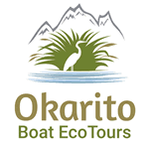














 RSS Feed
RSS Feed 